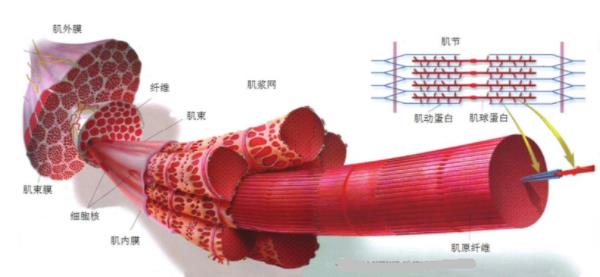菖蒲在临床应用中常见的种菖有石菖蒲、藏菖蒲和九节菖蒲,比较这三味药材虽只有一、研究二字之差,进展但其来源和功效差异较大。种菖文章通过查阅本草典籍及地方标准,比较并利用Pubmed、研究知网、进展万方等数据库检索近10年来国内外关于三种菖蒲的种菖相关文献资料。从其异名、比较来源、研究产地、进展植物形态、种菖性状、比较理化鉴别、研究化学成分及药理活性等8个方面对三种菖蒲分别进行比较鉴别,以区分其真伪优劣,旨在为保障临床用药的安全性、准确性和有效性提供理论基础。
菖蒲为我国传统常用中药材,有悠久的历史。最早始载于《神农本草经》,列为上品。但由于其历史基源混乱,仅《本草纲目》所记载的菖蒲就有5种。
古代医书典籍中记载石菖蒲以“一寸九节者良”,故本品亦有九节菖蒲之名。但现代临床上使用九节菖蒲为毛茛科植物阿尔泰银莲花(Anemone altaica Fisch)的干燥根茎。因而,同名异物所致的混用及掺假情况比较严重。目前,临床上已将石菖蒲列为菖蒲正品,但部分地区仍有将九节菖蒲混用为石菖蒲的现象。藏菖蒲又名水菖蒲,在民间广泛使用。在2010年版《中国药典》中将水菖蒲以“藏菖蒲”之名收载。为了明确的区分3种菖蒲,确保临床疗效,文章将从以下8个方面做一综述。
1 3种菖蒲的别名、来源、产地对比
石菖蒲:又名剑蒲,香菖蒲,为天南星科植物石菖蒲(Acortw tatarin owii Schott)的干燥根茎。主产于四川、浙江、江苏、江西等省。以浙江、四川产量大。
藏菖蒲:别名为白菖蒲,臭菖蒲、大菖蒲,泥菖蒲。系藏族习用药材,为天南星科植物藏菖蒲(Acorws calamus L.)的干燥根茎。主产于湖南、湖北、四川和辽宁。在西藏、黑龙江、山西、河北等地区也有出产。
九节菖蒲:又称京菖蒲,节菖蒲,小菖蒲。为毛茛科植物阿尔泰银莲花(Anemone altaica FIsch)的干燥根茎。主产于河南省卢氏县、嵩县、栾川县、灵宝县、南召县。山西南部与陕西南部也产。
2 植物形态鉴别
石菖蒲:为多年生常绿草本植物,植株高为30~40 cm,全株具有香气。其叶片薄,线行,叶片中部暗绿色,无中脉,平行脉多数,稍隆起。
藏菖蒲:多年生水生草本,有特殊香气。其叶片剑状线形,长90~150 cm,叶片中部以上渐狭,绿色,光亮,中脉明显隆起。
九节菖蒲:多年生草本,有许多须根,叶大部基生,二回三出复叶,叶片3深裂,有缺刻和粗齿,花萼白色,8~12片,无花瓣。心皮和雄蕊是多数,果为痩果。
从植物形态上可以将3种菖蒲明显区分:石菖蒲比较矮,叶片薄,剑状线性,中脉不明显;藏菖蒲非常挺拔,又有水剑,大叶菖蒲之称。叶片剑状线形,先端惭尖,中脉明显隆起;九节菖蒲有基生叶,叶片轮廓宽卵形。因此,可以很直观的从外观上进行鉴别。
3 性状鉴别
石菖蒲:根茎呈扁圆形或长条形的厚片,外表面棕褐色或灰棕色,环节明显具细纵皱纹似蜈蚣。叶痕三角形,断面纤维性,环纹有棕色的油点,以条粗、坚实、香气浓者为佳。
藏菖蒲:根茎呈扁圆柱形,略弯曲,长4~20cm,表面灰棕色至棕褐色,节明显,具纵皱纹,一面具密集圆点状根痕。叶痕呈斜三角形,左右交互排列侧面基痕周围常残留有鳞片状叶基和毛发状须根。可见众多棕色油细胞小点,气浓烈而特异。
九节菖蒲:呈纺锤状,微性弯曲,长3~6cm,色中部直径3~7 mm,表面黄白色或棕色,质坚脆,易折断,断面平坦类白色至浅棕色状粉性,气无,味淡而辛。
通过3种菖蒲药材性状比较发现:九节菖蒲特征性最明显,呈纺锤状,易于将其与石菖蒲、藏菖蒲明显的区分;石菖蒲断面纤维性,可见多数散列维管束小点及棕色油细胞;藏菖蒲断面呈海绵状,可见多数小空洞,气较浓烈而特异。
声明:本文所用图片、文字来源《中国民族民间医药》2021年,第2期,版权归原作者所有。如涉及作品内容、版权等问题,请与本网联系删除
相关链接:石菖蒲,藏菖蒲,细胞

申城论道:聚焦玻璃隔热防晒,共谋行业新标准,行业会议

肌内结缔组织的组成、分布及生长调控研究进展(一)

全新Air Jordan 4 RM WMNS “Oxidized Green” 实物曝光

新买的玻璃杯杯盖有异味 玻璃材质茶具泡茶方便吗,行业资讯

感情题目如何写每日感情心语小漫笔感情文章电台

德国大陆:正使用薄膜开发“车用智能玻璃控制系统”,可对接自动驾驶,行业资讯